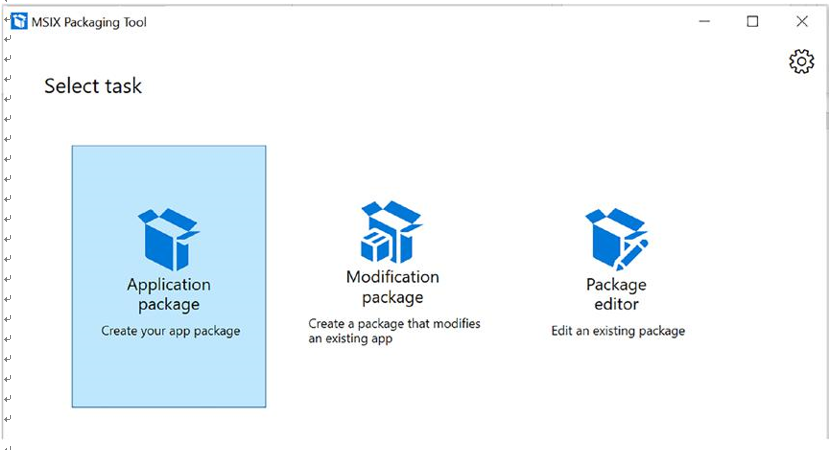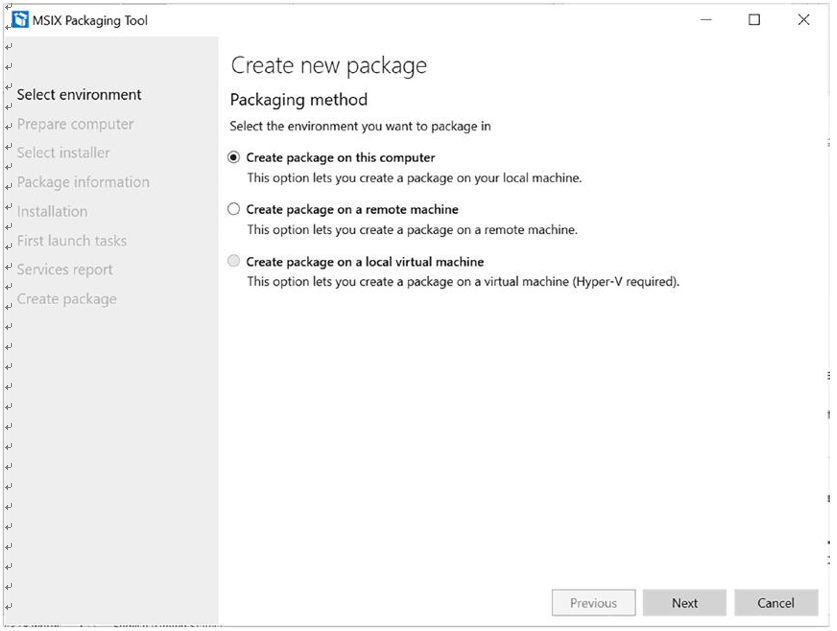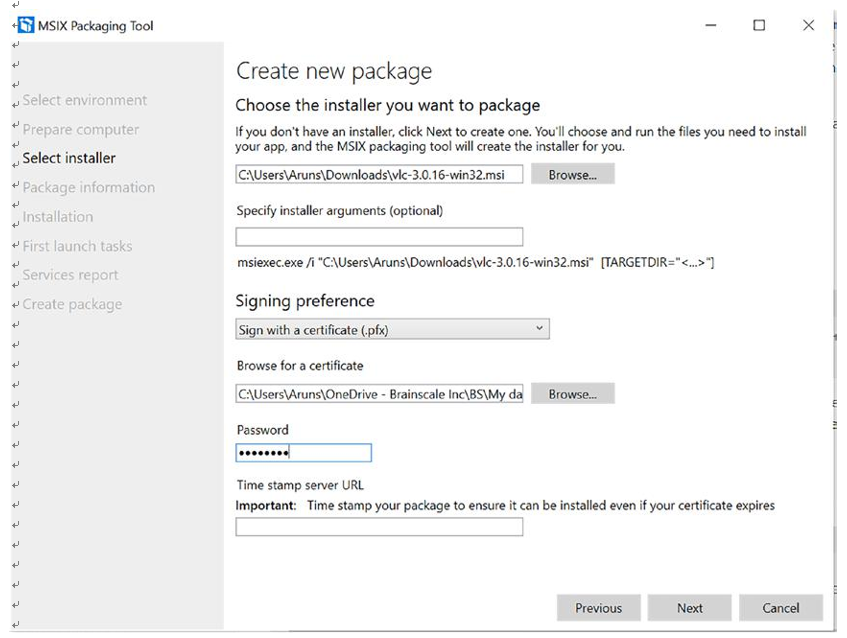How to Create a Package with the MSIX Packaging Tool? – Install and Configure Apps on a Session Host
How to Create a Package with the MSIX Packaging Tool?
The MSIX Packaging tool is a Microsoft tool that allows you to repackage your existing desktop applications to the MSIX format. It offers both an interactive UI and a command line for conversions and gives you the ability to convert an application without having the source code. The MSIX Packaging tool is now available from the Microsoft Store,
or you can download it from https://www.microsoft.com/p/msix-packaging-tool/9n5lw3jbcxkf. You can run your desktop installers through this tool and obtain an MSIX package that you can install on your machine.
The MSIX Packaging tool enables you to create an MSIX application package from MSI, EXE, ClickOnce, App-V, Script, and a manual installation. The MSIX Packaging tool
currently supports App-V 5.1, but if you have a package with App-V 4.x, then you can use the source installer to convert it to MSIX.
Let’s go through the steps to capture the MSIX package using the MSIX Packaging tool. Once you install the MSIX Packaging tool, you will be prompted to provide consent to send telemetry data at first launch. Click “Application package” to create a new package. This tool also provides the ability to modify existing packages. See Figure 9-1.

Figure 9-1. MSIX packaging tool
Select a packaging method on the second screen and click Next. The following are the options you will use in the packaging method:
•\ If you are already working in a clean environment, select “Create package on this computer.”
•\ If you want to connect to an existing virtual or remote machine, select “Create package on a remote machine.”
•\ If you have a local virtual machine on your local VM that you want to convert, select “Create package on a local virtual machine.” Please note that we support only Hyper-V virtual machines; if you want to use another virtualization product, you can connect using the remote machine option. See Figure 9-2.

Figure 9-2. MSIX packaging tool, creating a new package
MSIX will prepare the computer on the next screen. The MSIX Packaging tool driver is required, and the tool will automatically try to enable it, if it is not alreadyenabled. The tool will first check with DISM to see if the driver is installed. Also, it will show some recommendations such as disabling Windows Update or Windows Search, so you can select the checkbox and click “Disable selected.” See Figure 9-3.

Figure 9-3. MSIX packaging tool, preparing the computer
You can select an existing installer in case you already have MSI, App-v, EXE, ClickOnce, or script files; otherwise, you can click Next and the MSIX Packaging tool will create the installer file for you, and then you can install the application manually during the installation phase.
If you have any installer arguments, you can enter the desired argument(s) in the “Specify installer arguments” field. This field accepts any string.
You also must specify the signing preference. The following are the signing options available, and you can select any one of them:
•\ Sign with Device Guard signing: This option allows you to sign into your Microsoft Active Directory (AD) account that you have configured to use with Device Guard signing, which is a signing service that Microsoft provides where you don’t need to provide your own certificate.
•\ Sign with a certificate (.pfx): Browse to and select your .pfx certificate file. If the certificate is password protected, type the password in the password box.
•\ Specify a .cer file (does not sign): This option allows you to specify a .cer file. This is useful when you don’t want to sign the package, but you want to ensure that the publisher information matches the subject of the certificate that will be used for signing.
•\ Do not sign package: Select this option if you will be signing your package later, because you cannot install an MSIX package if it is not signed.
I will be using the VLC MSI installer and self-sign certificate for demonstration purposes. See Figure 9-4.

Figure 9-4. MSIX packaging tool, choosing an installer
